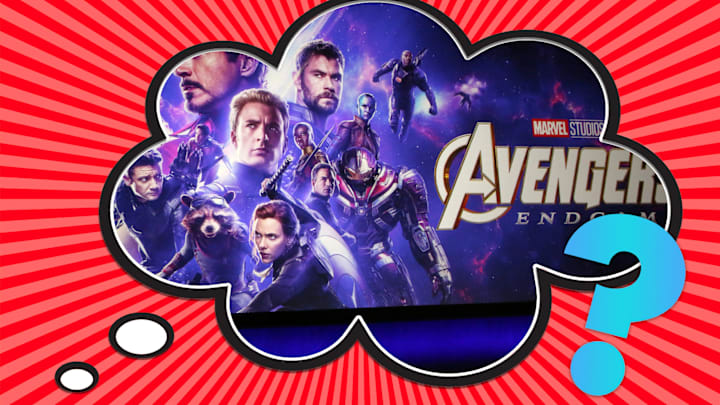At the end of 2008’s Iron Man, Nick Fury (Samuel L. Jackson) approaches Tony Stark (Robert Downey Jr.) to gauge his interest in “the Avengers initiative.” Over two dozen Marvel Cinematic Universe (MCU) films later, post- and mid-credits scenes meant to tease audiences have become the norm and have been emulated by other studios hoping to create similar fan loyalty for their own franchises.
Marvel, of course, didn’t originate the post-credits stinger. So who did? When did audiences first learn it might be a good idea to sit through a list of gaffers?
We can start by discarding the first 50-odd years of cinema: Through the mid-20th century, movies often unfurled credits at the beginning rather than the end of the film, effectively making the entire movie a post-credits sequence.
This trend began to shift in the 1960s, when credits (which were getting longer) moved to the end of the film, making way for the post-credits stinger. That happened for the first time in The Silencers (1966), when secret agent Matt Helm (Dean Martin) reappears, luxuriating in bed, while an onscreen legend promises his return in another film. A kind of spoof of the spy genre, the tease was meant to reference the James Bond Will Return guarantees that came at the conclusion of the 007 franchise entries. (If you consider the post-credits sequence purely a promise, then perhaps Bond is the answer.)
Of course, not all such sequences are intended to be a commercial for a sequel. Some are more of a tag line, as in the case of 1968’s exploitation flick She-Devils on Wheels (a she-devil is sprung from prison) or 1979’s The Muppet Movie, when Animal tries to usher out loitering moviegoers by telling them to “go home.” A similar tactic was used in 1986’s Ferris Bueller’s Day Off, when Ferris (Matthew Broderick) breaks the fourth wall and shoos people out of the theater. (Bueller’s reappearance made an impact on MCU chief Feige, who told Entertainment Weekly in 2018 that the scene inspired Marvel’s post-credits tradition of today.)
The trend of movies teasing a follow-up gained more traction in the ‘80s, with both Young Sherlock Holmes (1985) and the bomb Masters of the Universe (1987) resurrecting villains—Moriarty and Skeletor, respectively—that had been vanquished. While a Masters sequel was discussed, this time with surfer Laird Hamilton in the lead role in place of Dolph Lundgren, it never materialized. (The ‘80s and ‘90s are full of examples of movies that set up sequels that never came to be.)
Some films did away with footage and opted instead for a sound effect. At the end of 1986’s Aliens, for example, the sound of a Facehugger can be heard.
The post-credits shot invites another question: Is the last scene the proper end of the movie, or is it the last scene shown?
“[It’s] before the credits, that’s really how we look at it,” Feige said. “That’s the conclusion of the story that we’re telling, and then if there’s a credits scene after the main one ends or the first one, it’s usually something that ties into the movie you’ve just seen that’s extra. At the very end of the credits, that’s what’s to come.” Unless you’re planning a Young Sherlock Holmes sequel.
Looking for a new movie to watch, or at least a movie that’s new to you? Mental Floss’s new book, The Curious Movie Buff: A Miscellany of Fantastic Films from the Past 50 Years, offers behind-the-scenes details and amazing facts about some of the greatest movies of the past half-century. And it’s available now at your favorite place to buy books, or online right here.
